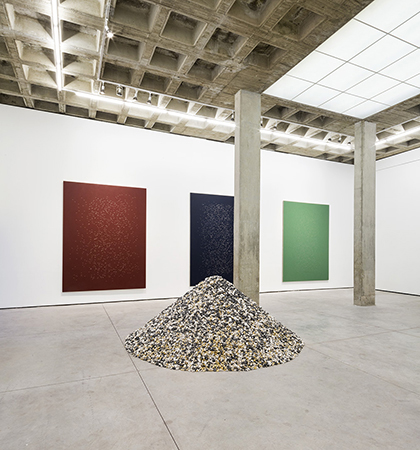Jorge Méndez Blake
Ventana poniente / Southwest Window
Opening: February 2, 2016
OMR
Córdoba 100, Col. Roma
CP 06700 Mexico City
T +52 55 5511 1179
info@galeriaomr.com
OMR has developed itself organically from the very beginning. Founded by Jaime Riestra and Patricia Ortiz Monasterio back in 1983, the gallery actually started off in frame production and after some time gave way to the first show entitled Bestiario de Fotografías. It was the photographic work of Adolfo Riestra, Pablo Ortiz Monasterio and David Lynch that would inaugurate the first of more than four hundred exhibitions over the course of the last 32 years.
Pioneers in the promotion of contemporary art in Mexico, OMR established itself as one of the first galleries in the country. For almost 20 years, the gallery has marked its presence on international platforms, participating in the most renowned art fairs around the globe and looking to foster not only Mexican and international artists but to promote a culture of collectionism.
2016 represents a new stage for the gallery. Jaime Riestra and Patricia Ortiz Monasterio handed over their project to their son Cristobal Riestra and with this change came a change of venue as well: the legendary house in Plaza Rio de Janeiro that until recently was the home of OMR ceased to be.
OMR will open the doors to its new home officially and for the first time on February 2 with a solo show of Jorge Méndez Blake entitled Ventana Poniente/Southwest Window. The show is an exploration around the space from where great minds create and created in the past. What effect does the space we inhabit and coexist within have upon our practice and lives? The show arose from the artist´s visit to the home of Emily Dickinson and from realizing that most of her work was written from a small studio, facing a small window and on a small desk. Jorge Méndez Blake plays with and between disciplines to materialize literature and show how the physical space in no way limits greatness. Dickinson guessed in her own time the structure of her poetry. Her forward thinking took decades to be understood. The rhythm of her verses and the intonation of her poetry forever marked this literary form. Those mystery hyphens, the silent invitation to look into the abyss to see ourselves reflected, that mediation between the concrete and the transcending, the subtle yet wild gaze, the fight to defend the empty canvas where creation can ride freely—all of this has been appropriated, invigorated and arranged through the alternative language that Jorge Méndez Blake points toward in his practice. The way the artist re-reads is in itself a way of writing, his writing becomes both sculpture and canvas. His work inscribes itself within Dickinson’s testament and widens the vast catalogue of correspondence the poet knit with her recipients and accomplices in a search to fine-tune the sound of silence.
